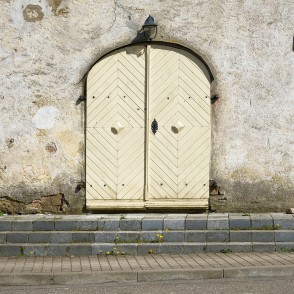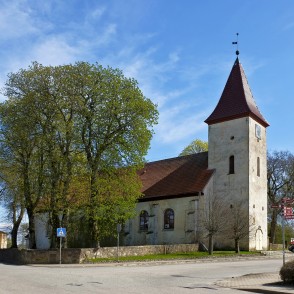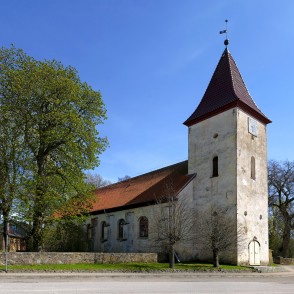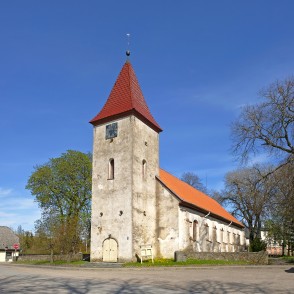It was built in 1651 and is the oldest building in the town. The church is included in the Latvian national list of protected monuments. A boulder fence around the church has survived till today.
The church building has not been under massive reconstruction. Its interior has a lot of original parts like pulpit in the Baroque taste from the beginning of the 18th century, an altar with wooden sculptures and twines of acanthus leaves, ceiling chandelier in Mannerist style.
A small exhibition about the history of the church is displayed in the church tower.
liepaja.travel
When in the 14th century the stone castle was built in Durbe, it also embodied the Castle Church. It is known that in 1451 there was a church, because in the Museum of Riga Dom Cathedral there was a bell with the inscription of the year. In 1496 documents a Catholic priest was mentioned working in it. In 1525 a parsonage was established there. The decision of Provincial Assembly of Courland laid foundations to a new church building that was built with allowance of the Duke of Courland. It was finished with the parish funds and consecrated on 28th February 1651. The church was consecrated by Priest Herman Topiuss who was appointed to be Dean of Grobiņa.
In Durbe Church there are an altar retable with woodcarvings and a pulpit from the 18th century, a chandelier from 1609 and an antique font. The organ was built in 1834 and reconstructed in 1874. In the belfry there are two bells made in 1896. In 1903 a tower watch was installed there which worked until 1922, it was fixed in 1935. The antique clay floor-tiles have partially survived.
In 1770 the building of the belfry was finished. The church was expanded and repaired several times: in 1847, in 1872 and in 1908. Due to the rebuilding in the 19th century it lost its original slender tower. The vault above the altar was bricked up when the church was extended.
On the wall beside the pulpit there is a marble memorial plaque with the names of parishioners deceased in 1919 – during the Latvian War of Independence.
In 1872 a stone wall was built around the church. There was an old cemetery beside the church; a few graves have still remained. Priest Edmund Proctor is buried next to the church. Atis Kronvalds was a home tutor for Proctor’s family.
In old times the priests of Durbe served very wide region – from Aizpute (Hasenpoth) to the border of Lithuania. From 1573 Latvian and German inhabitants had different priests, but in 1857 the Parish was divided into independent Northern and Southern parishes. The church of Ilmāja (Ilmajen) belonged to Northern Parish, but St. Bartolommeo church (or the church of Ilzene (Ylse) or Bunka) belonged to Southern Parish. In 1857 the parsonage of the Latvian Parish was also built there, because the previous one burned down together with the church archive.
At the beginning of the 20th century there were approximately 6000 parishioners in each parish, but at the end of the century there were only around 1000.
From 2003 to 2005 the roofs of the tower and the main building were restored with the help of the United Courland Foundations in Germany (Vereinigte Kurländische Stiftungen), as well as von Bordelius family and Erfurt’s Parish of St. Thomas’ Church.
visitdurbe.lv





